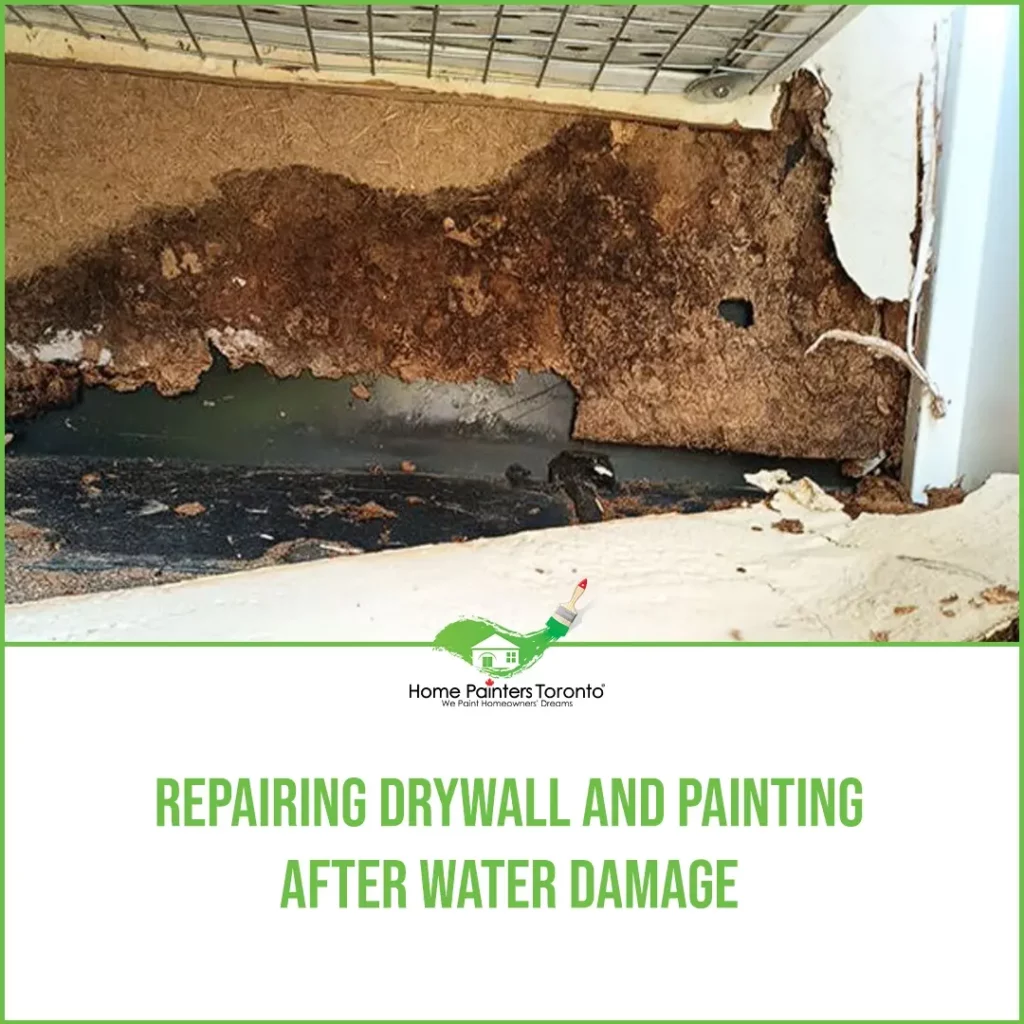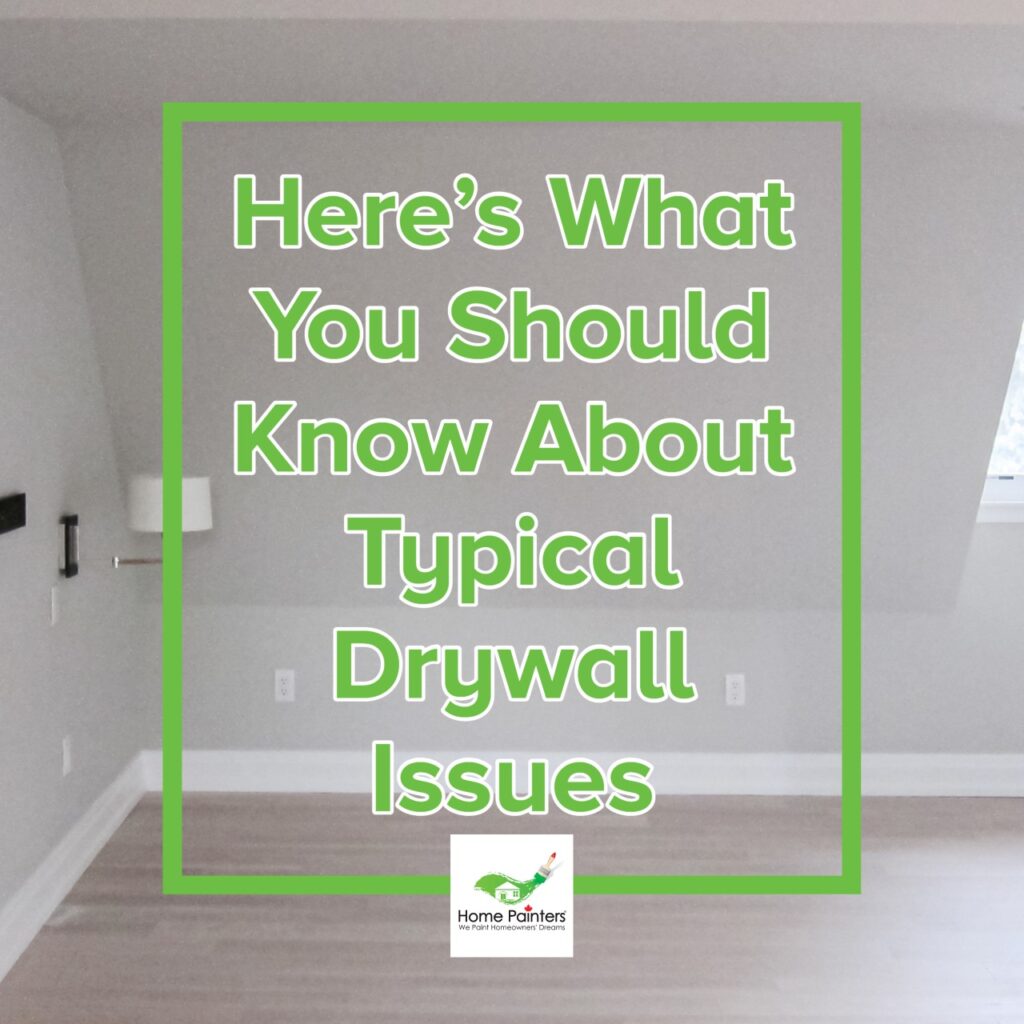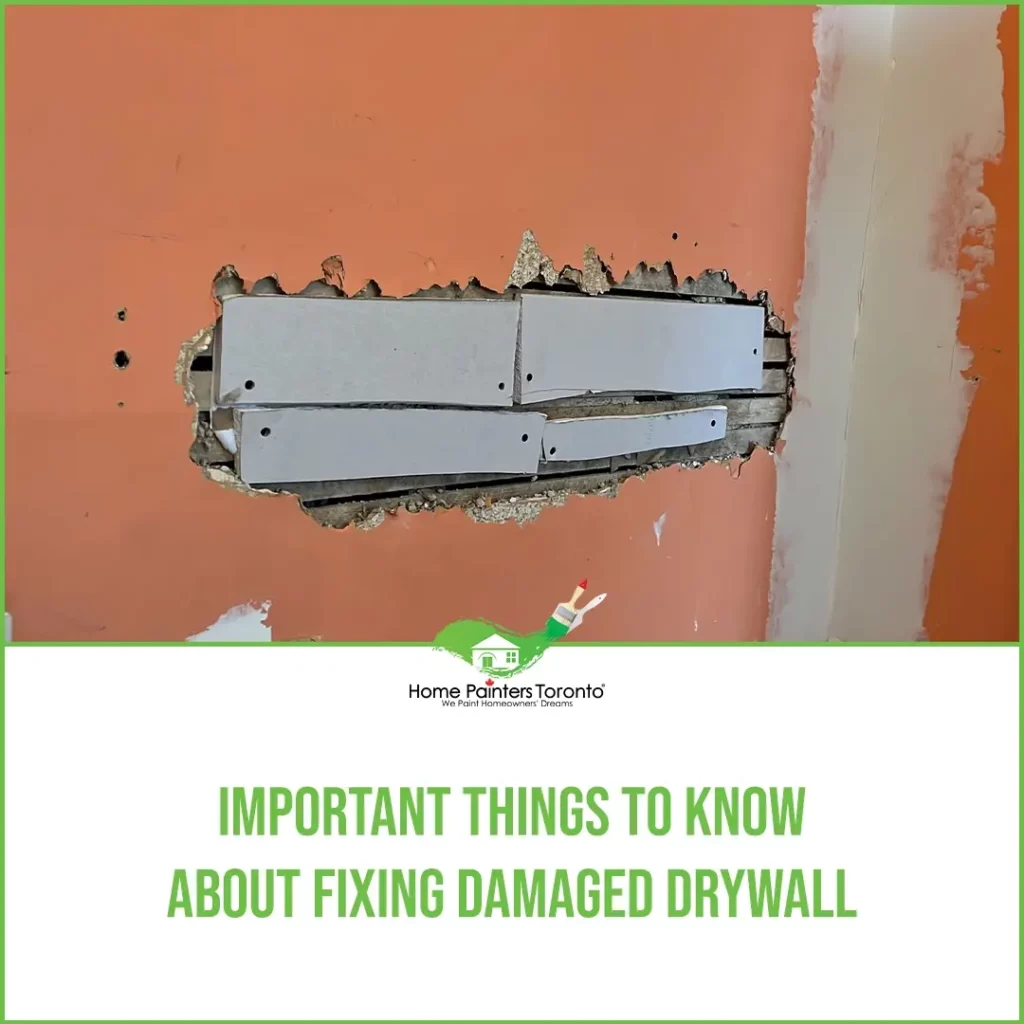
When an in-home disaster occurs and your walls sustain some water damage, mould tends to appear and spread quickly. It can only take 24 to 48 hours, as damp walls are the perfect conditions for mould to thrive. Water damage can impact your walls in many ways, and it needs water damage repair immediately.
Here’s what you should do when water damage occurs.
Signs of Water Damage in Walls
How do I know when water damage has occurred?
Water damage is not always a dramatic emergency. Sometimes, if a pipe bursts or your basement floods, you’ll know immediately that there will be some damage. Water damage can also happen over time and be less detectable until there’s a significant issue. When it comes to mould growth, the same can be true. Many homeowners don’t realize there is an issue until it’s a significant problem. Here are some indicators that water damage has occurred in your home:
- The walls appear wet. If you’ve experienced some plumbing issues and there’s a significant amount of water, your walls will look wet and damp.
- Stains. Stains will be the primary indicator of water damage and mould growth for slow leaks. If you see stains that have reached a yellow or brown shade, you’ll know that they have likely started growing mould.
- Deterioration. When the walls start to deteriorate, you have a water damage problem. Cracks, paint peeling, wrinkles, and sagging are indicators that your walls are starting to bow and bulge under the pressure of water damage.
- Odour. Sometimes mould can be undetectable just by taking a closer look at your walls. If you smell the musty mould smell and can’t find a source, you likely have some mould growing in your walls.
- Discoloration. If you’ve noticed that your walls are turning black, grey, brown, green, or white, then the water damage and mould are a deep-rooted issue.
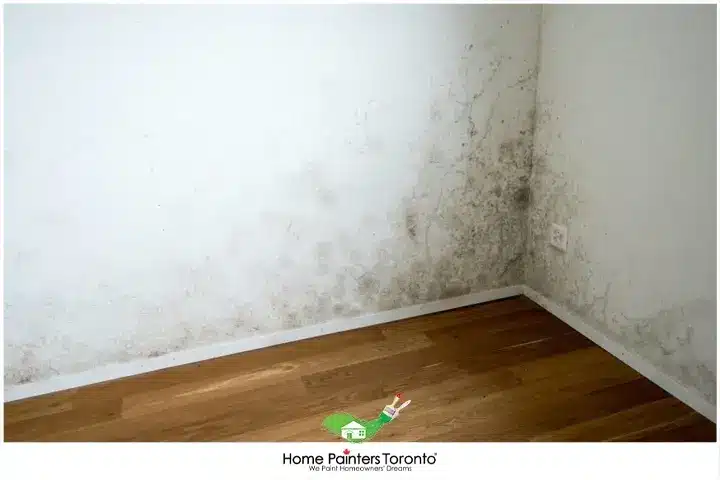
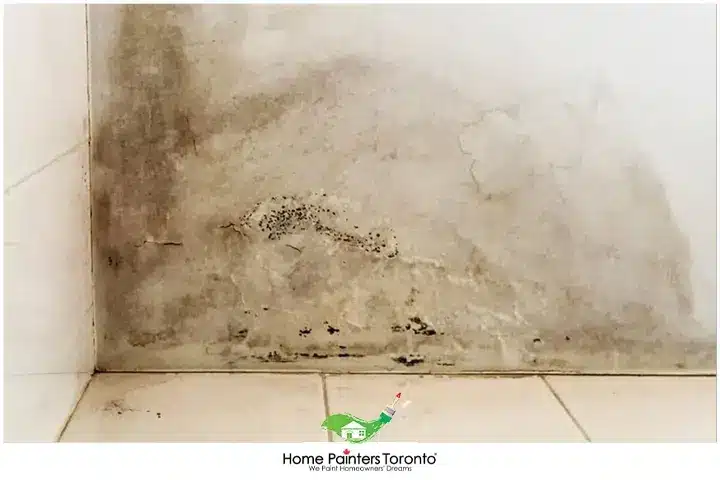
Preventing Mold Growth
Once you’ve cleaned up the water, you will want to do your best to prevent the mould from having a place to grow. Once mould has made your walls their home, you’ll have a more expensive problem on your hands, as the drywall will need to be entirely replaced to prevent the spread. The first step is to try to control the dampness. Moisture is mould’s preferred environment, so try to get rid of the water. Clean up any water from the source and provide your space with plenty of ventilation to try and clear out any potential moisture in the walls. You’ll want to wipe your walls down to try and manually remove any excess water. If you’re too late and you notice some mould growth, you can try to scrub it off immediately. Never procrastinate any kind of clean-up attempts when it comes to your walls and water damage, as it can have lasting damage. Suppose you only had a little mould growth that you could easily take care of. In that case, we always recommend repainting your home with high-quality paint that is moisture-wicking. Using a type of paint with this quality will help prevent future mould growth.
Health Concerns Caused by Mould Exposure
While mould is impossible to eradicate entirely unless your home has had some water damage, it’s likely not something you really worry about as a homeowner. Mould spores travel through the air, in dust, and outdoors, and it becomes a problem when they find a moist place to land and begin to spread.
You should be fine if you have proper ventilation and your home doesn’t have excess moisture. Suppose you’re finding that musky mould smell or are experiencing health issues. In that case, you might have some water damage or unwanted moisture you need to find. Mould definitely has the potential to cause health issues, especially if you are immuno-compromised. The spores produce allergens, toxic substances, and irritants. If you come in contact with mould, either through breathing it in or touching it, you may find you have an adverse reaction to it. Symptoms could include red eyes, rashes, sneezing, runny nose, and fever. It’s common to have an allergic reaction to mould. Many people who have asthma will have an adverse reaction to mould exposure. Suppose you or one of your family members is sensitive or has asthma. In that case, it’s essential to ensure you prevent mould growth as early as possible.
One of the more severe conditions mould exposure can lead to is called Aspergillosis. Caused by Aspergillus mould, it can lead to severe reactions in people with allergies or weakened immune systems. This condition can lead to serious bronchial and fungal infections in the worst-case scenario.
Impact on Your Walls
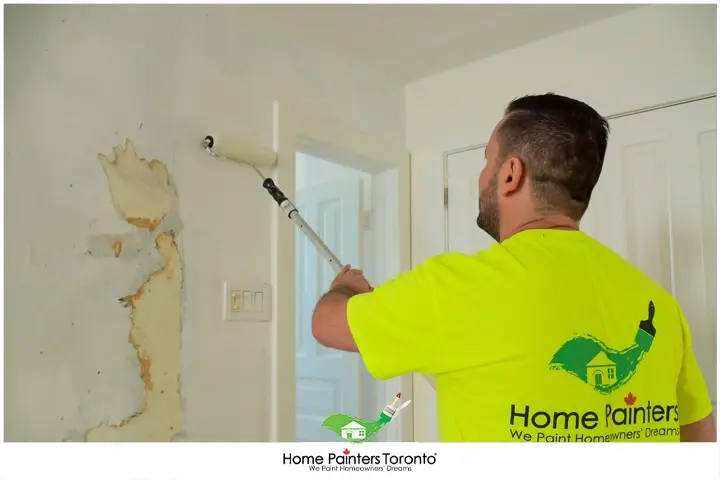
If your walls have sustained water damage and mould growth, they will likely require drywall replacement. Cleaning up the water and giving it a fresh coat of paint isn’t always the answer, as a fresh paint job is not a cure for mould growth. Since mould growth can go undetected until it’s a massive issue, it’s best to be proactive and replace the affected drywall.
Do-it-Yourself or Hire a Professional: Making The Right Choice
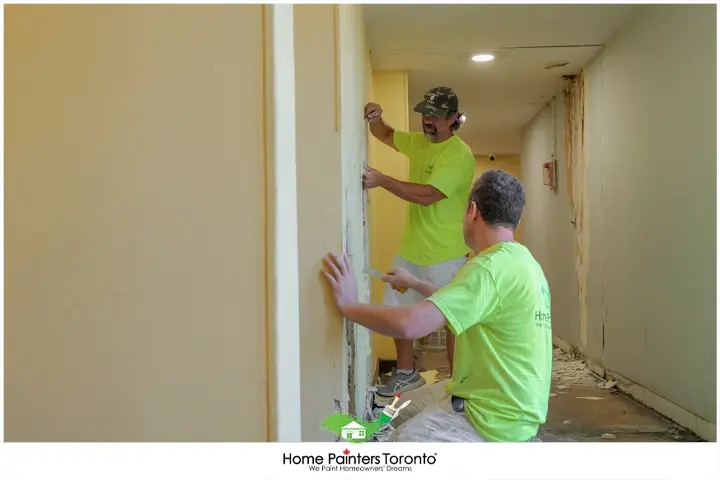
When facing the daunting signs of water damage inside walls, the decision between attempting a DIY fix or enlisting professional help can be challenging. Let’s break it down into simpler terms to help you make an informed choice.
Delving Into DIY
The propensity to take matters into our own hands has its appeal. You’re in control, it can sometimes be more cost-efficient, and it also provides a sense of accomplishment. However, it’s crucial to consider the scope and depth of the damage.
If the water damage stems from a small, traceable leak and your wall’s only visible sign of distress is minor paint discolouration, in such cases, a well-guided DIY approach can be effective. You’d still require some basic tools and access to the right knowledge, but with careful execution, you might restore your wall back to its former glory.
Calling In the Experts
On the flip side, if the damage has permeated multiple layers of your wall, leading to deformations, supporting structure weakenings, and widespread discolouration, seeking professional intervention becomes not just preferable but necessary. Professionals bring expertise, experience, and advanced tools to the table. They can diagnose the severity of the problem accurately, fix it efficiently, and even offer insights into preventing future damage. The wall water damage repair cost may be high at first, but it’s worth it in the long run.
Striking the Right Balance
As a business owner or homeowner, it’s important to strike the right balance, and learn when to pick up the brush and when to pick up the phone to call a professional. Remember, temporary cost savings from a DIY approach should not jeopardize the long-term structural integrity of your wall(s) and consequently, your building.
Wrapping it Up
DIY initiatives can be rewarding and cost-effective for minor damages, but for significant and complex water damage, a professional touch is indispensable. Knowing when to pass the baton is a skill in itself, one that could potentially save you from notable financial and property loss
Top Blogs Related To
“How Water Damage Impacts Your Walls”
If you’ve experienced water damage, call Home Painters Toronto. We can repair and replace damaged drywall and provide a professional paint job that will bring your room back to life. We use only the highest-quality materials while giving you the best price. Our friendly and trustworthy team of experts will get the job done right the first time. Avoid the hard work and skill and hire the best team of professionals in the Toronto area with Home Painters Toronto. Our team of experts can take care of your drywall project and get your home looking better than before with a fresh coat of paint. We specialize in drywall repair and interior painting.
Give us a Call 416.494.9095 or email [email protected] to get your FREE quote today. And don’t forget to follow us on all our social channels below!


